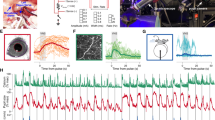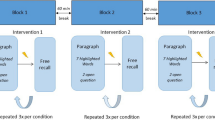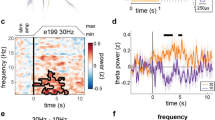Abstract
Currently available therapeutic interventions for treatment-resistant depression, including switch, combination, and augmentation strategies, are less than ideal. Observations of mood elevation during vagus nerve stimulation (VNS) therapy for pharmacoresistant epilepsy suggested a role for VNS therapy in refractory major depression and prompted clinical investigation of this neurostimulation modality. The VNS Therapy System™ has been available for treatment of pharmacoresistant epilepsy since 1997 and was approved by the US Food and Drug Administration for treatment-resistant depression in July, 2005. The physiology of the vagus nerve, mechanics of the VNS Therapy System™, and efficacy and safety in pharmacoresistant epilepsy are reviewed. Promising results of VNS therapy for treatment-resistant depression have been forthcoming from both acute and long-term studies, evidenced in part by progressive improvements in depression rating scale scores during the 1st year of treatment with maintenance of response thereafter. VNS therapy is well tolerated in patients with either pharmacoresistant epilepsy or treatment-resistant depression. As in epilepsy, the mechanisms of VNS therapy of treatment-resistant depression are incompletely understood. However, evidence from neuroimaging and other studies suggests that VNS therapy acts via innervation of the nucleus tractus solitarius, with secondary projections to limbic and cortical structures that are involved in mood regulation, including brainstem regions that contain serotonergic (raphe nucleus) and noradrenergic (locus ceruleus) perikarya that project to the forebrain. Mechanisms that mediate the beneficial effects of VNS therapy for treatment-resistant depression remain obscure. Suggestions for future research directions are described.
Similar content being viewed by others
Log in or create a free account to read this content
Gain free access to this article, as well as selected content from this journal and more on nature.com
or
References
Ben-Menachem E, Hamberger A, Hedner T, Hammond EJ, Uthman BM, Slater J et al (1995). Effects of vagus nerve stimulation on amino acids and other metabolites in the CSF of patients with partial seizures. Epilepsy Res 20: 221–227.
Ben-Menachem E, Manon-Espaillat R, Ristanovic R, Wilder BJ, Stefan H, Mirza W et al (1994). Vagus nerve stimulation for treatment of partial seizures: 1. A controlled study of effect on seizures. First International Vagus Nerve Stimulation Study Group. Epilepsia 35: 616–626.
Berthoud H-R, Neuhuber WL (2000). Functional and chemical anatomy of the afferent vagal system. Auton Neurosci 85: 1–17.
Bohning DE, Lomarev MP, Denslow S, Nahas Z, Shastri A, George MS (2001). Feasibility of vagus nerve stimulation-synchronized blood oxygenation level-dependent functional MRI. Invest Radiol 36: 470–479.
Carney RM, Freedland KE (2003). Depression, mortality, and medical morbidity in patients with coronary heart disease. Biol Psychiatr 54: 241–247.
Carpenter LL, Moreno FA, Kling MA, Anderson GM, Renegold WT, Labiner DM et al (2004). Effect of vagus nerve stimulation on cerebrospinal fluid monoamine metabolites, norepinephrine, and gamma-aminobutyric acid concentrations in depressed patients. Biol Psychiatr 56: 418–426.
Casey KL (2000). Imaging pain. International Association for the Study of Pain 8 http://www.iasp-pain.org/PCU00-4.html (Accessed September 8, 2005).
CDRH (Center for Devices and Radiological Health) (2002). The least burdensome provisions of the FDA modernization act of 1997: concept and principles; final guidance for FDA and industry. October 4, 2002; available at: http://www.fda.gov/cdrh/ode/guidance/1332.pdf (Accessed January 17, 2006).
Chae J-H, Nahas Z, Lomarev M, Denslow S, Lorberbaum JP, Bohning DE et al (2003). A review of functional neuroimaging studies of vagus nerve stimulation (VNS). J Psychiatr Res 37: 443–455.
Clinckers R, Smolders I, Meurs A, Ebinger G, Michotte Y (2004). Anticonvulsant action of hippocampal dopamine and serotonin is independently mediated by D and 5-HT receptors. J Neurochem 89: 834–843.
Conway CR, Chibnall JT, Fletcher JW, Filla-Taylor J, Grossberg GT, Li X et al (2002). Three months of vagus nerve stimulation is associated with increased limbic and paralimbic activity (FDG PET) in treatment-resistant depressed subjects. Poster presented at the 57th Annual Scientific Convention of the Society of Biological Psychiatry. Philadelphia, PA, May 16–18, 2002.
Craig AD (2002). How do you feel? Interoception: the sense of the physiological condition of the body. Nat Rev Neurosci 3: 655–666.
Dalgleish T, Yiend J, Bramham J, Teasdale JD, Ogilvie AD, Malhi G et al (2004). Neuropsychological processing associated with recovery from depression after stereotactic subcaudate tractotomy. Am J Psychiatr 161: 1913–1916.
Dean AC, Wu AT, Burgat FT, Labar DT (2001). Motor cortex excitability in epilepsy patients treated with vagus nerve stimulation. Presented at the American Epilepsy Society 55th Annual Meeting. Philadelphia, PA, November 30–December 5, 2001.
Debonnel G, Dorr AE (2004). Effect of vagus nerve stimulation (VNS) on dorsal raphe serotonergic neurons: an electrophysiological study in the rat. Poster presented at the Society for Neuroscience Annual Meeting. San Diego, CA, October 23–27, 2004.
DeGiorgio CM, Schachter SC, Handforth A, Salinsky M, Thompson J, Uthman B et al (2000). Prospective long-term study of vagus nerve stimulation for the treatment of refractory seizures. Epilepsia 41: 1195–1200.
Demitrack MA (2005). Examining the safety and effectiveness of transcranial magnetic stimulation for depression. Psychiatric Ann 35: 120–128.
Devous MD, Husain M, Harris TS, Rush AJ (2002). Effects of VNS on regional cerebral blood flow in depressed subjects. Poster presented at the 42nd Annual New Clinical Drug Evaluation Unit Meeting. Boca Raton, FL, June 10–13, 2002.
Drevets WC, Bogers W, Raichle ME (2002). Functional anatomical correlates of antidepressant drug treatment assessed using PET measures of regional glucose metabolism. Eur Neuropsychopharmacol 12: 527–544.
Elger G, Hoppe C, Falkai P, Rush AJ, Elger CE (2000). Vagus nerve stimulation is associated with mood improvements in epilepsy patients. Epilepsy Res 42: 203–210.
George MS, Nahas Z, Bohning DE, Mu Q, Kozel FA, Borckhardt J et al (2004). Mechanisms of action of vagus nerve stimulation (VNS). Clin Neurosci Res 4: 71–79.
George MS, Rush AJ, Marangell LB, Sackeim HA, Brannan SK, Davis SM et al (2005). A one-year comparison of vagus nerve stimulation with treatment as usual for treatment-resistant depression. Biol Psychiatr 58: 364–373.
George MS, Sackeim HA, Marangell LB, Husain MM, Nahas Z, Lisanby SH et al (2000a). Vagus nerve stimulation. A potential therapy for resistant depression? Psychiatr Clin North Am 23: 757–783.
George MS, Sackeim HA, Rush AJ, Marangell LB, Nahas Z, Husain MM et al (2000b). Vagus nerve stimulation: A new tool for brain research and therapy. Biol Psychiatr 47: 287–295.
Hagen MC, Sheikh S, Adson D, Rittberg B, Abuzzahab FS, Lee JT et al (2003). Metabolic changes in treatment-resistant depression responsive to VNS therapy. Poster presented at the 58th Annual Scientific Convention of the Society of Biological Psychiatry. San Francisco, CA, May 15–17, 2003.
Hammond EJ, Uthman BM, Reid SA, Wilder BJ (1992). Electrophysiological studies of cervical vagus nerve stimulation in humans: I. EEG effects. Epilepsia 33: 1013–1020.
Handforth A, DeGiorgio CM, Schachter SC, Uthman BM, Naritoku DK, Tecoma ES et al (1998). Vagus nerve stimulation therapy for partial-onset seizures: a randomized active-control trial. Neurology 51: 48–55.
Harden CL, Pulver MC, Ravdin LD, Nikolov B, Halper JP, Labar DR (2000). A pilot study of mood in epilepsy patients treated with vagus nerve stimulation. Epilepsy Behav 1: 93–99.
Henry TR (2002). Therapeutic mechanisms of vagus nerve stimulation. Neurology 59 (Suppl 4): S3–S14.
Henry TR, Bakay RAE, Pennell PB, Epstein CM, Votaw JR (2004). Brain blood flow alterations induced by therapeutic vagus nerve stimulation in partial epilepsy: II. Prolonged effects at high and low levels of stimulation. Epilepsia 45: 1064–1070.
Henry TR, Bakay RAE, Votaw JR, Pennell PB, Epstein CM, Faber TL et al (1998). Brain blood flow alterations induced by therapeutic vagus nerve stimulation in partial epilepsy: I. Acute effects at high and low levels of stimulation. Epilepsia 39: 983–990.
Henry TR, Votaw JR, Pennell PB, Epstein CM, Bakay RAE, Faber TL et al (1999). Acute blood flow changes and efficacy of vagus nerve stimulation in partial epilepsy. Neurology 52: 1166–1173.
Judd LL, Paulus MJ, Schettler PJ, Akiskal HS, Endicott J, Leon AC et al (2000). Does incomplete recovery from first lifetime major depressive episode herald a chronic course of illness? Am J Psychiatr 157: 1501–1504.
Kahan L (2000). The CDRH Staff College, The Least Burdensome Provisions of the FDA Modernization Act of 1997. Presentation delivered on March 19, 2000.
Kauffmann CD, Cheema MA, Miller BE (2004). Slow right prefrontal transcranial magnetic stimulation as a treatment for medication-resistant depression: a double-blind, placebo-controlled study. Depress Anxiety 19: 59–62.
Kellinghaus C, Loddenkemper T, Moddel G, Tergau F, Luders J, Ludemann P et al (2003). Electric brain stimulation for epilepsy therapy. Nervenarzt 74: 664–676.
Kessler RC, Berglund P, Demler O, Jin R, Koretz D, Merikangas KR et al (2003). The epidemiology of major depressive disorder. Results from the National Comorbidity Survey Replication (NCS-R). JAMA 289: 3095–3105.
Kling MA, Loyd D, Sansbury N, Ren Ke, Murphy AZ (2003). Effects of short-term VNS therapy on Fos expression in rat brain nuclei. Poster presented at the 58th Annual Scientific Convention of the Society of Biological Psychiatry. San Francisco, CA, May 15–17, 2003.
Kovacs DA, Zoll JG (1974). Seizure inhibition by median raphe nucleus stimulation in rat. Brain Res 70: 165–169.
Krahl SE, Clark KB, Smith DC, Browning RA (1998). Locus ceruleus lesions suppress the seizure-attenuating effects of vagus nerve stimulation. Epilepsia 39: 709–714.
Krahl SE, Senanayake SS, Pekary AE, Sattin A (2004). Vagus nerve stimulation (VNS) is effective in a rat model of antidepressant action. J Psychiatr Res 38: 237–240.
Lenox RH, Frazer A (2002). Mechanism of action of antidepressants and mood stabilizers (chapter 79). In: Davis KL, Charney D, Coyle JT, Nemeroff C (eds). Neuropsychopharmacology: The Fifth Generation of Progress. Lippincott Williams & Wilkins: Philadelphia. pp 1139–1163.
Lisanby SH, Bazil CW, Resor SR, Nobler MS, Finck DA, Sackeim HA (2001). ECT in the treatment of status epilepticus. J ECT 17: 210–215.
Lomarev M, Denslow S, Nahas Z, Chae J-H, George MS, Bohning DE (2002). Vagus nerve stimulation (VNS) synchronized BOLD fMRI suggests that VNS in depressed adults has frequency/dose dependent effects. J Psychiatr Res 36: 219–227.
Malhi GS, Bartlett JR (2000). Depression: a role for neurosurgery? Br J Neurosurg 14: 415–422.
Marangell LB, Rush AJ, George MS, Sackeim HA, Johnson CR, Husain MM et al (2002). Vagus nerve stimulation (VNS) for major depressive episodes: one year outcomes. Biol Psychiatr 51: 280–287.
Matthews K, Eljamel MS (2003). Vagus nerve stimulation and refractory depression. Br J Psychiatr 183: 181–183.
Mayberg HS, Brannan SK, Tekell JL, Silva JA, Mahurin RK, McGinnis S et al (2000). Regional metabolic effects of fluoxetine in major depression: serial changes and relationship to clinical response. Biol Psychiatr 48: 830–843.
Mayberg HS, Lozano AM, Voon V, McNeely HE, Seminowicz D, Hamani C et al (2005). Deep brain stimulation for treatment-resistant depression. Neuron 45: 651–660.
McNamara JO, Galloway MT, Rigsbee LC, Shin C (1984). Evidence implicating substantia nigra in regulation of kindled seizure threshold. J Neurosci 4: 2410–2417.
Michaud CM, Murray CJL, Bloom BR (2001). Burden of disease—implications for future research. JAMA 285: 535–539.
Montoya A, Weiss AP, Price BH, Cassem EH, Dougherty DD, Nierenberg AA et al (2002). Magnetic resonance imaging-guided stereotactic limbic leukotomy for treatment of intractable psychiatric disease. Neurosurgery 50: 1043–1049.
Morris GL, Mueller WM, The Vagus Nerve Stimulation Study Group (1999). Long-term treatment with vagus nerve stimulation in patients with refractory epilepsy. Neurology 53: 1731–1735.
Mu Q, Bohning DE, Nahas Z, Walker J, Anderson B, Johnson KA et al (2004). Acute vagus nerve stimulation using different pulse widths produces varying brain effects. Biol Psychiatr 55: 816–825.
Nahas Z, Marangell LB, Husain MM, Rush AJ, Sackeim HA, Lisanby SH et al (2005). Two-year outcome of vagus nerve stimulation (VNS) for treatment of major depressive episodes. J Clin Psychiatr 66: 1097–1104.
Naritoku DK, Terry WJ, Helfert RH (1995). Regional induction of fos immunoreactivity in the brain by anticonvulsant stimulation of the vagus nerve. Epilepsy Res 22: 53–62.
Nibuya M, Morinobu S, Duman RS (1995). Regulation of BDNF and trkB mRNA in rat brain by chronic electroconvulsive seizure and antidepressant drug treatments. J Neurosci 15: 7539–7547.
Nobler MS, Oquendo MA, Kegeles LS, Malone KM, Campbell CC, Sackeim HA et al (2001). Decreased regional brain metabolism after ECT. Am J Psychiatr 158: 305–308.
Prudic J, Olfson M, Marcus SC, Fuller RB, Sackeim HA (2004). Effectiveness of electroconvulsive therapy in community settings. Biol Psychiatr 55: 301–312.
Rasmussen KG, Sampson SM, Rummans TA (2002). Electroconvulsive therapy and newer modalities for the treatment of medication-refractory mental illness. Mayo Clin Proc 77: 552–556.
Robinson RG (2003). Poststroke depression: prevalence, diagnosis, treatment, and disease progression. Biol Psychiatr 54: 376–387.
Rosenbaum JF, Heninger G (2000). Vagus nerve stimulation for treatment-resistant depression. Biol Psychiatr 47: 273–275.
Rush AJ, Crismon ML, Toprac MG, Trivedi MH, Rago WV, Shon S et al (1998). Consensus guidelines in the treatment of major depressive disorder. J Clin Psychiatr 59 (Suppl 20): 73–84.
Rush AJ, George MS, Sackeim HA, Marangell LB, Husain MM, Giller C et al (2000). Vagus nerve stimulation (VNS) for treatment-resistant depressions: a multicenter study. Biol Psychiatr 47: 276–286.
Rush AJ, Marangell LB, Sackeim HA, George MS, Brannan SK, Davis SM et al (2005a). Vagus nerve stimulation for treatment-resistant depression: a randomized, controlled acute phase trial. Biol Psychiatr 58: 347–354.
Rush AJ, Sackeim HA, Marangell LB, George MS, Brannan SK, Davis SM et al (2005b). Effects of 12 months of vagus nerve stimulation in treatment-resistant depression: a naturalistic study. Biol Psychiatr 58: 355–363.
Rush AJ, Trivedi MH (1995). Treating depression to remission. Psychiatr Ann 25: 704–705, 709.
Sackeim HA, Haskett RF, Mulsant BH, Thase ME, Mann JJ, Pettinati HM et al (2001b). Continuation pharmacotherapy in the prevention of relapse following electroconvulsive therapy: a randomized controlled trial. JAMA 285: 1299–1307.
Sackeim HA, Rush AJ, George MS, Marangell LB, Husain MM, Nahas Z et al (2001a). Vagus nerve stimulation (VNS™) for treatment-resistant depression: efficacy, side effects, and predictors of outcome. Neuropsychopharmacology 25: 713–728.
Sackeim HA, Rush AJ, Marangell LB, George MS, Brannan SK (2004). Long-term antidepressant effects of vagus nerve stimulation (VNS) in treatment-resistant depression. Poster presented at 43rd American College of Neuropsychopharmacology Annual Meeting. San Juan, PR, December 12–16, 2004.
Salinsky MC, Uthman BM, Ristanovic RK, Wernicke JF, Tarver WB (1996). Vagus nerve stimulation for the treatment of medically intractable seizures. Results of a 1-year open-extension trial. Vagus Nerve Stimulation Study Group. Arch Neurol 53: 1176–1180.
Schulze-Rauschenbach SC, Harms U, Schlaepfer TE, Maier W, Falkai P, Wagner M (2005). Distinctive neurocognitive effects of repetitive transcranial magnetic stimulation and electroconvulsive therapy in major depression. Br J Psychiatr 186: 410–416.
Sheikh S, Hagen MC, Adson D, Rittberg B, Abuzzahab FS, Lee JT et al (2003). Effects of VNS therapy on brain metabolism in severe, chronic treatment-resistant depression: one-year outcome. Poster presented at the 58th Annual Scientific Convention of the Society of Biological Psychiatry. San Francisco, CA, May 15–17, 2003.
Siegel J, Murphy GJ (1979). Serotonergic inhibition of amygdala-kindled seizures in cats. Brain Res 174: 337–340.
The Vagus Nerve Stimulation Study Group (1995). A randomized controlled trial of chronic vagus nerve stimulation for treatment of medically intractable seizures. Neurology 45: 224–230.
Walker BR, Easton A, Gale K (1999). Regulation of limbic motor seizures by GABA and glutamate transmission in nucleus tractus solitarius. Epilepsia 40: 1051–1057.
Yatham LN (2004). Newer anticonvulsants in the treatment of bipolar disorder. J Clin Psychiatr 65 (Suppl 10): 28–35.
Zobel A, Joe A, Freymann N, Clusmann H, Schramm J, Reinhardt M et al (2005). Changes in regional cerebral blood flow by therapeutic vagus nerve stimulation in depression: an exploratory approach. Psychiatr Res 139: 165–179.
Acknowledgements
We thank Sally Laden for editorial support in developing early drafts of this manuscript. We maintained complete control over the direction and content of the paper. Preparation of this report was supported by an unrestricted educational grant from Cyberonics Inc.
Author information
Authors and Affiliations
Corresponding author
Rights and permissions
About this article
Cite this article
Nemeroff, C., Mayberg, H., Krahl, S. et al. VNS Therapy in Treatment-Resistant Depression: Clinical Evidence and Putative Neurobiological Mechanisms. Neuropsychopharmacol 31, 1345–1355 (2006). https://doi.org/10.1038/sj.npp.1301082
Received:
Revised:
Accepted:
Published:
Issue date:
DOI: https://doi.org/10.1038/sj.npp.1301082
Keywords
This article is cited by
-
Transcutaneous auricular vagus nerve stimulation for the treatment of myoarthropatic symptoms in patients with craniomandibular dysfunction – a protocol for a randomized and controlled pilot trial
Pilot and Feasibility Studies (2024)
-
Stress-induced vagal activity influences anxiety-relevant prefrontal and amygdala neuronal oscillations in male mice
Nature Communications (2024)
-
Accelerated TMS - moving quickly into the future of depression treatment
Neuropsychopharmacology (2024)
-
Dosimetry in cranial photobiomodulation therapy: effect of cranial thickness and bone density
Lasers in Medical Science (2024)
-
Klinische Wirksamkeit der aurikulären Vagusnervstimulation in der Behandlung chronischer und akuter Schmerzen
Der Schmerz (2023)



